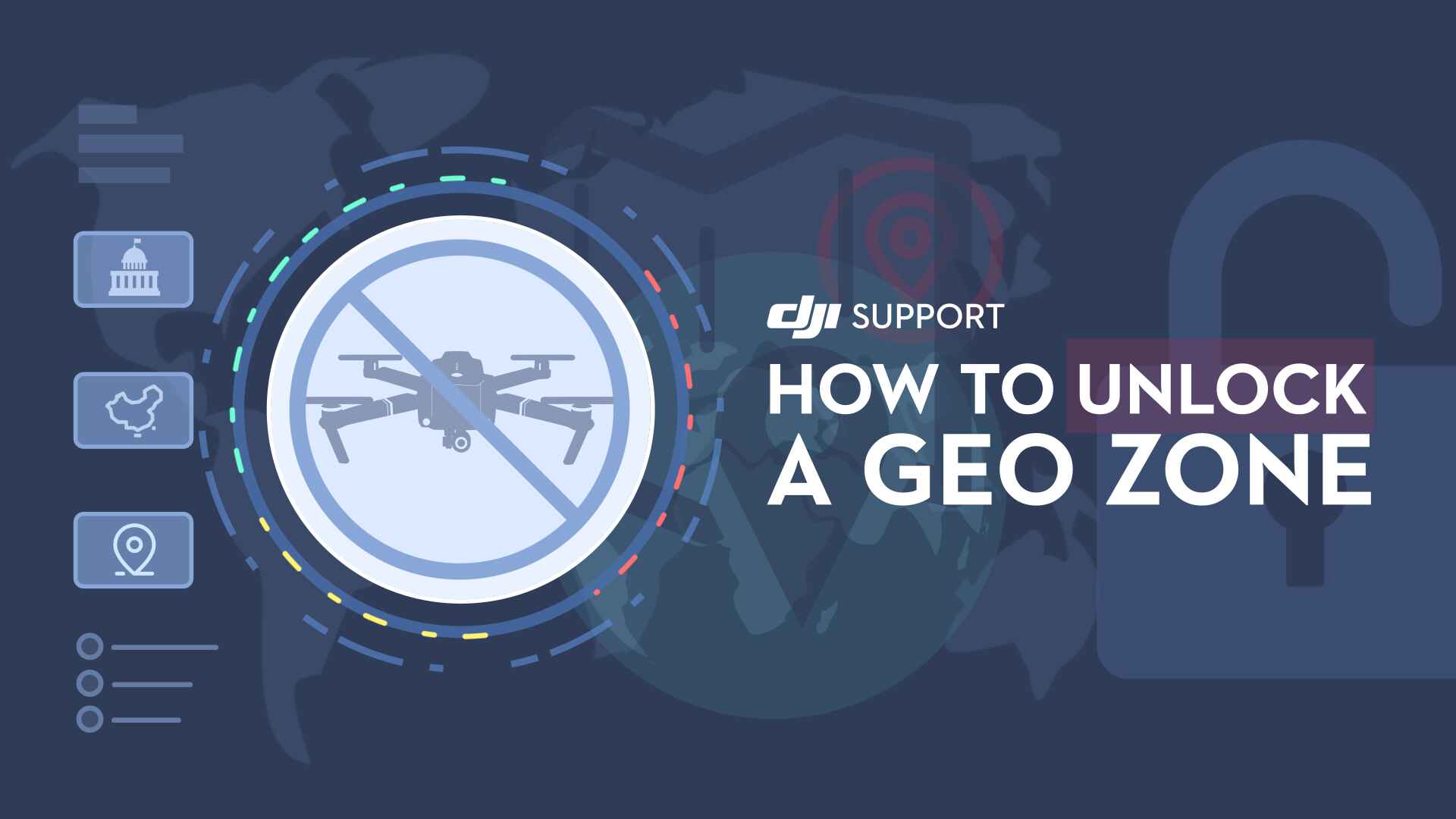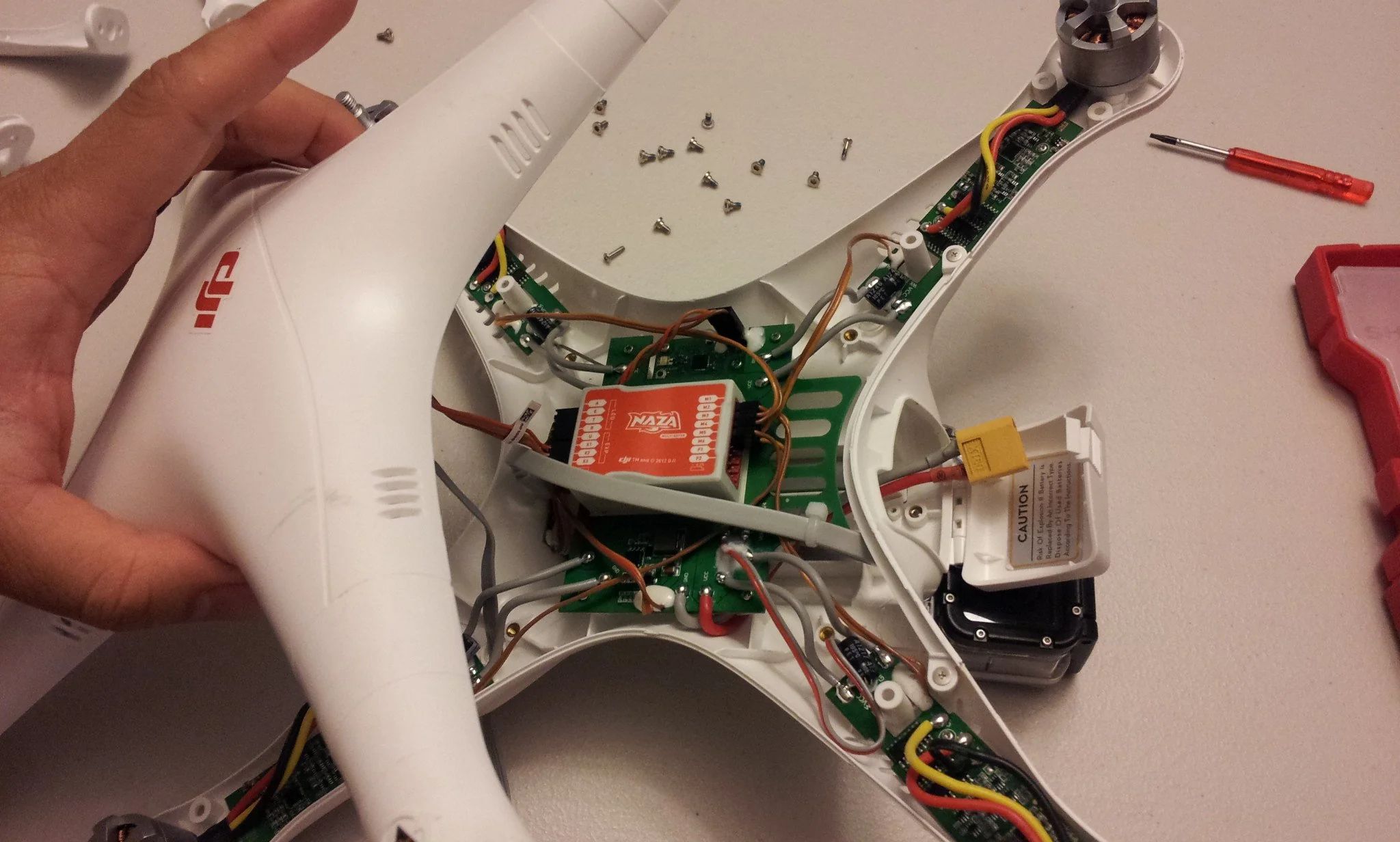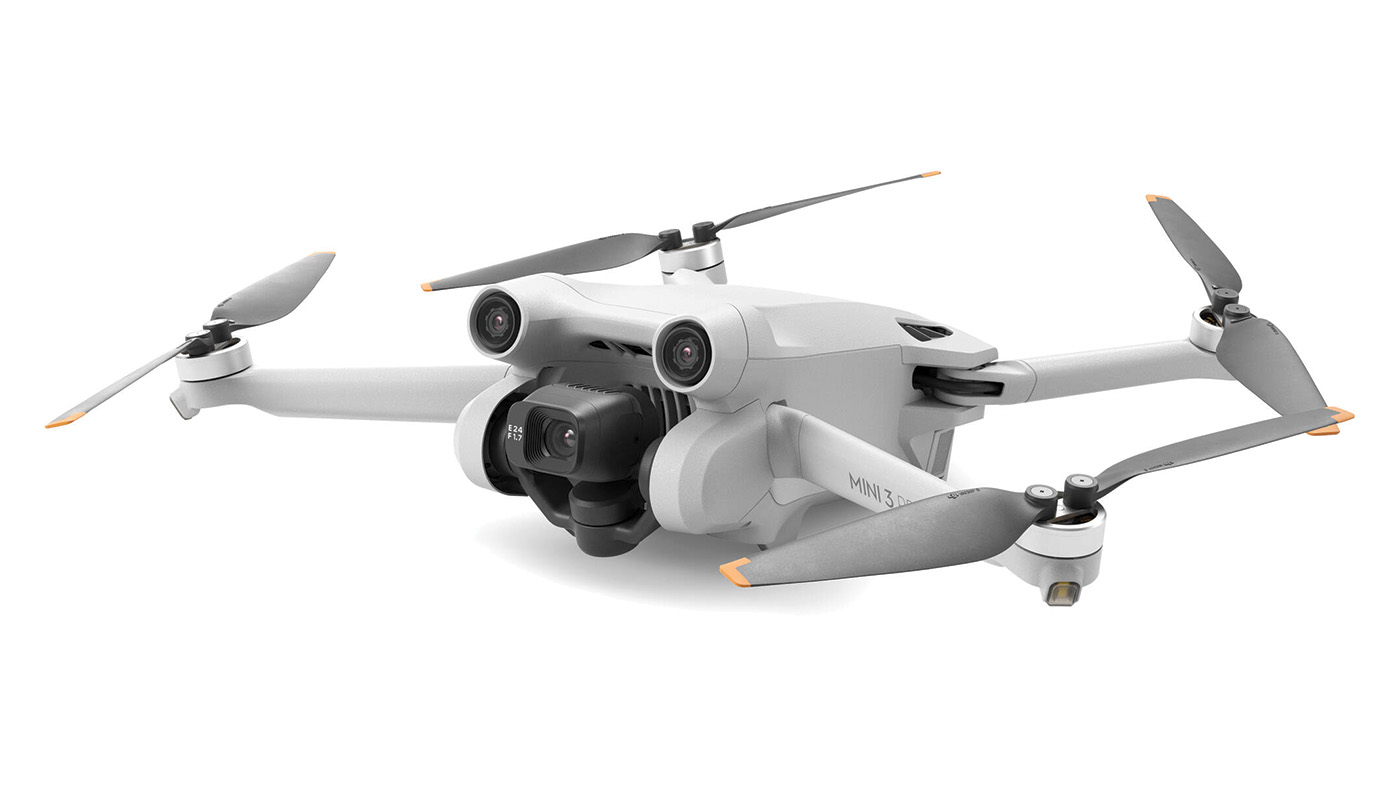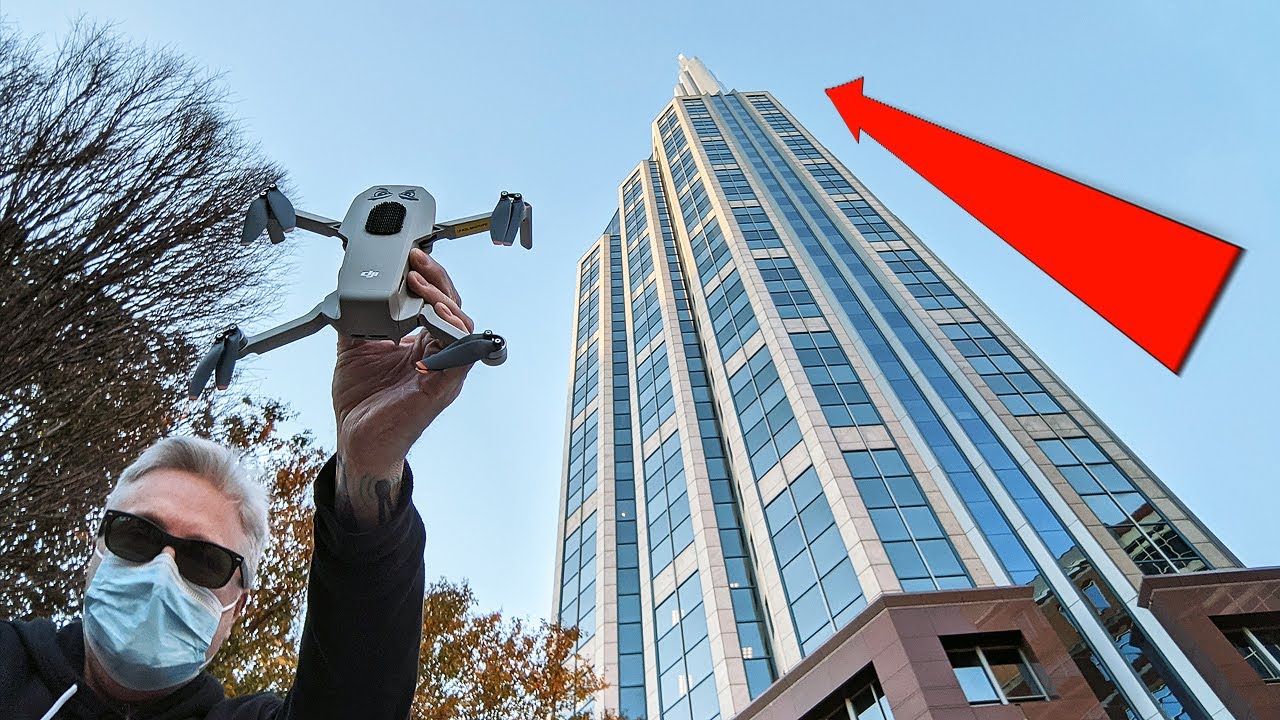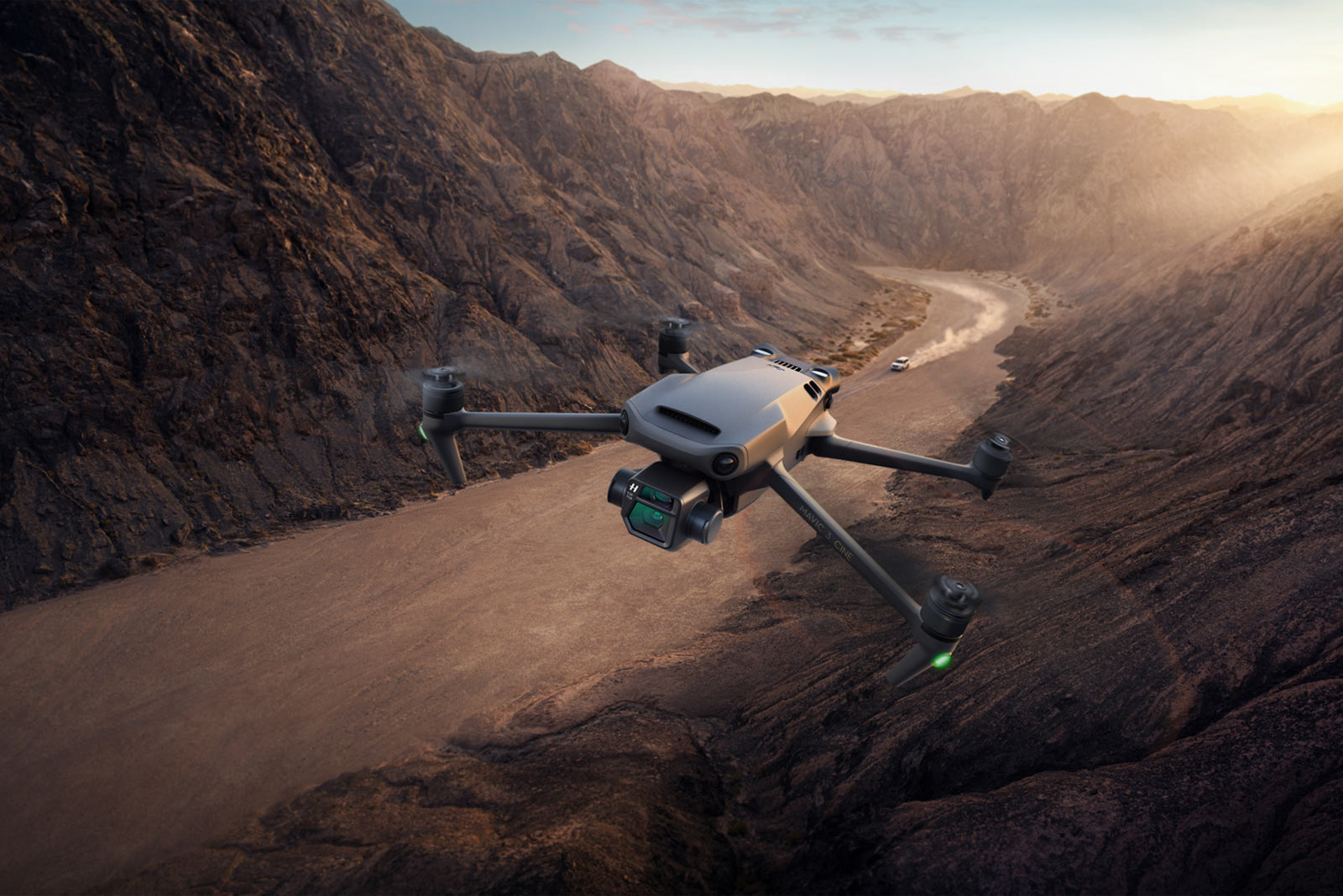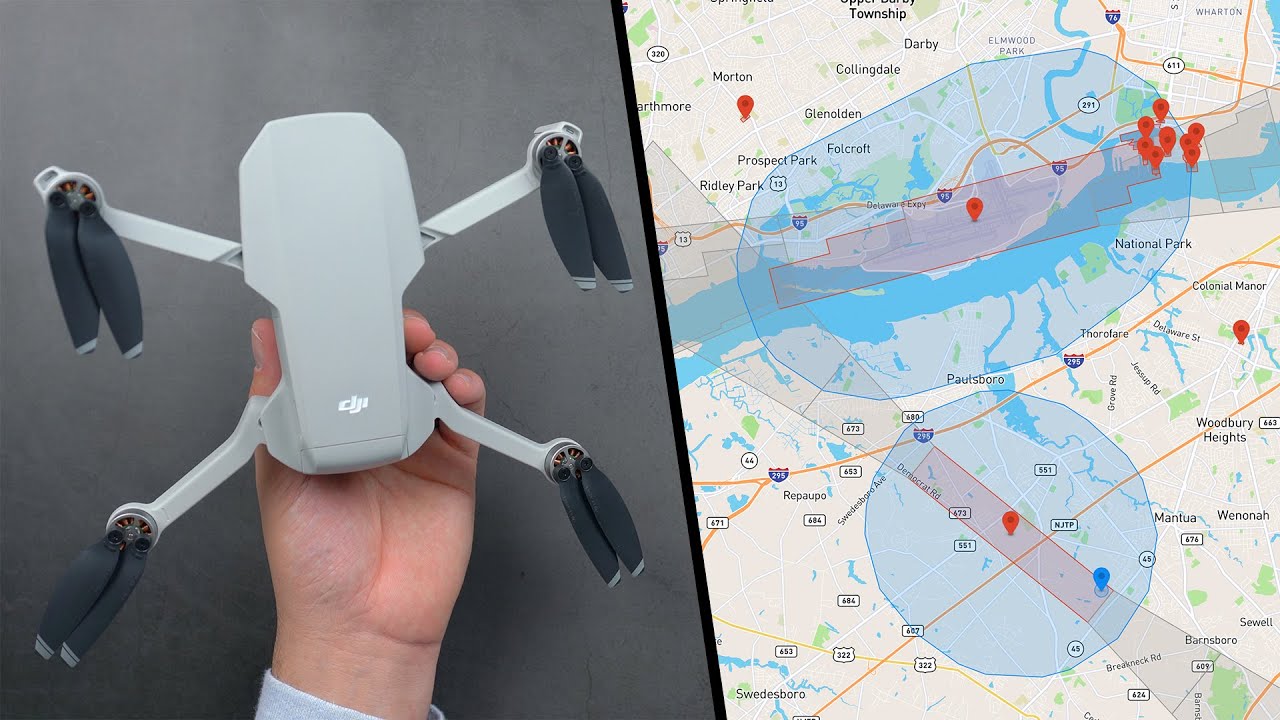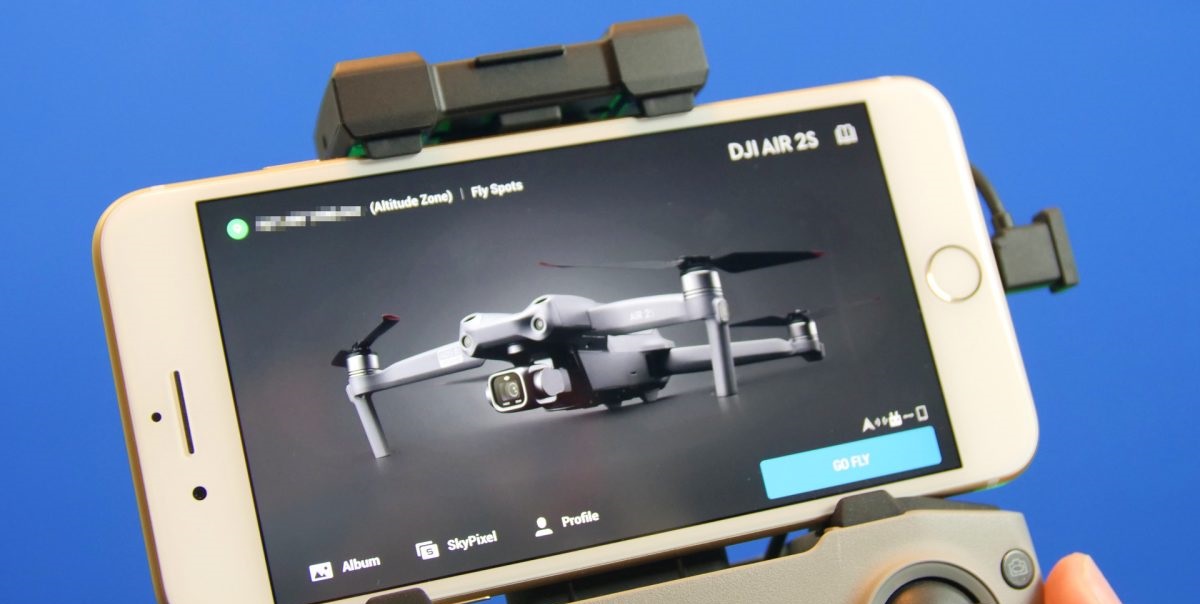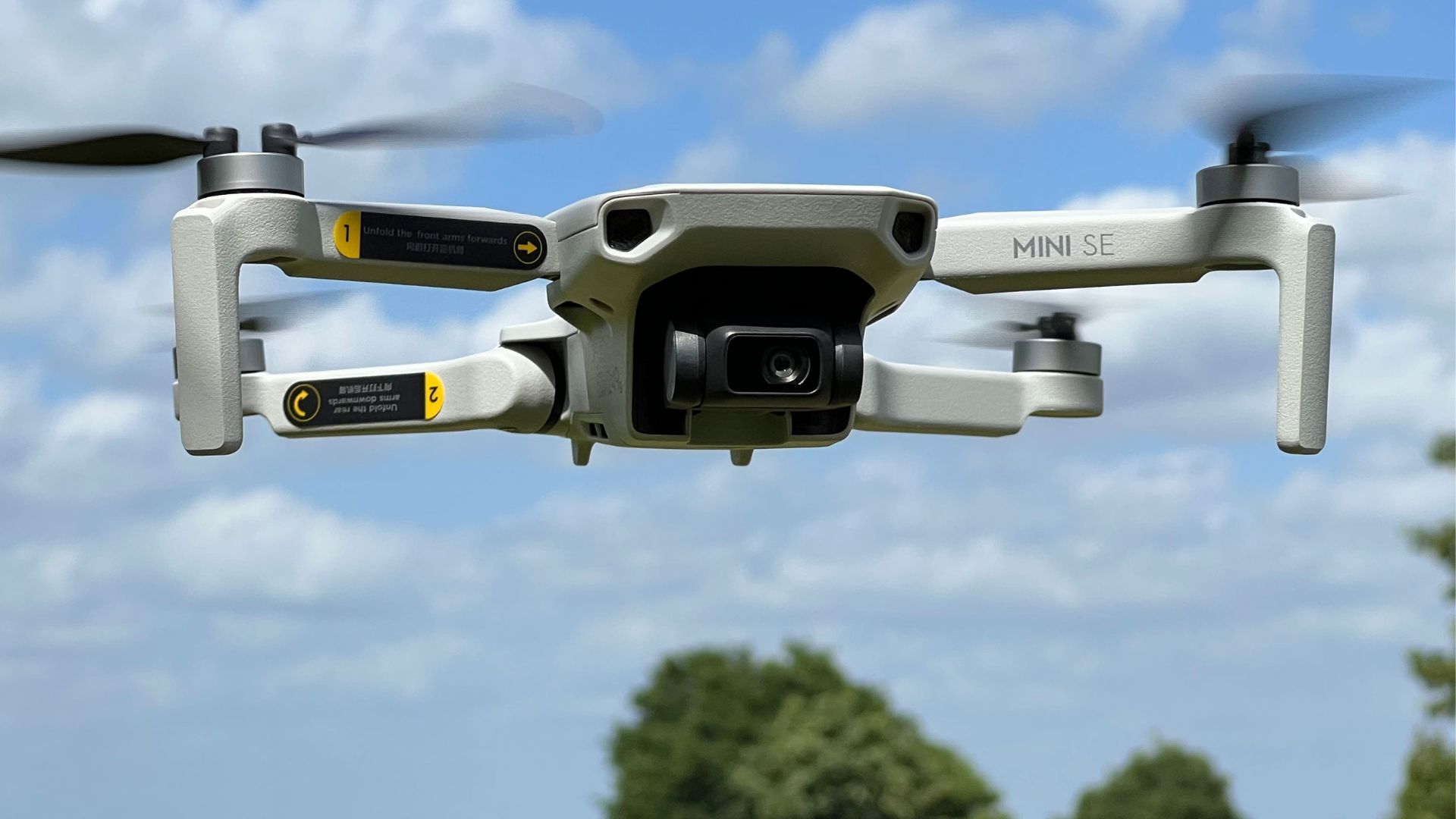Introduction
Welcome to the exciting world of drone flying! Drones have become increasingly popular among hobbyists and professionals alike, offering a unique perspective and endless possibilities for aerial photography, videography, and exploration. However, as the popularity of drones continues to rise, so does the need for regulations to ensure safety and privacy.
One such regulation is the creation of restricted zones, which are areas where flying a drone is either prohibited or subject to certain limitations. DJI, one of the leading drone manufacturers, has implemented a Restricted Zone feature in their drones to help pilots comply with local regulations and ensure safe and responsible flying.
So, what exactly is a DJI Restricted Zone? Essentially, it is a designated area where the drone’s GPS functionality is limited or disabled, preventing the drone from flying in that particular area. These zones are typically established around airports, military sites, national parks, and other sensitive locations where drone activity could pose a risk or interfere with operations.
The purpose of these Restricted Zones is to protect airspace safety, national security, and the privacy of individuals. By implementing this feature, DJI aims to promote responsible drone use and prevent unauthorized flights in restricted areas.
If you’re a drone enthusiast and find yourself wanting to fly in a restricted zone, worry not! DJI provides a straightforward process to unlock these zones, granted you have a legitimate reason and follow the necessary steps. In the following sections, we will explore the step-by-step process to unlock DJI Restricted Zones and ensure you can fly your drone legally and responsibly.
Before we dive into the process, it’s important to note that unlocking a restricted zone should only be done when you have obtained the appropriate permissions and clearances from the relevant authorities. Flying in restricted zones without proper authorization can result in legal consequences and puts the safety of others at risk.
Now, let’s move on to the step-by-step guide on how to unlock DJI Restricted Zones and enjoy flying your drone in authorized areas.
What is DJI Restricted Zone?
DJI Restricted Zone is a safety feature implemented by DJI, one of the leading drone manufacturers, to prevent unauthorized drone flights in certain designated areas. These areas are typically restricted for various reasons, such as proximity to airports, military bases, national parks, and other sensitive locations. The purpose of the restricted zone feature is to ensure airspace safety, protect national security, and respect privacy regulations.
When you enter a DJI Restricted Zone, your drone’s GPS functionality is limited or disabled, preventing you from flying in that area. This serves as a safeguard to avoid potential accidents or interference with critical operations. The restricted zones are dynamic, meaning their boundaries may change based on the latest regulations and security requirements.
It’s essential to know that DJI’s Restricted Zone feature is not meant to restrict drone flying entirely. Instead, it aims to provide drone pilots with the necessary information to comply with local regulations and fly responsibly. By preventing flight in restricted areas, DJI helps drone pilots avoid unintentional violations and ensures the safety and security of all airspace users.
Restricted zones can vary in size and distance from the restricted area’s boundary. While some restricted zones extend a few kilometers around an airport, others may be smaller and only encompass specific sensitive areas. DJI provides clear visual indicators on their flight control apps, such as DJI GO or DJI Fly, which display the restricted zones on a map overlay. This allows drone pilots to see the restricted areas and avoid accidentally entering them during flight.
It’s important to note that DJI’s Restricted Zone feature applies to both hobbyist and professional drones. This means that whether you’re flying a recreational drone or a commercial drone for aerial photography or videography, you need to comply with the restrictions set by DJI and local aviation authorities.
In the next section, we will explore why restricted zones exist and why it’s crucial for drone pilots to understand and abide by these regulations.
Why are there Restricted Zones?
Restricted zones exist for several reasons, all aimed at ensuring safety, protecting national security, and respecting privacy regulations. Let’s explore some of the main reasons why these zones are put in place:
1. Airport Safety: One of the primary reasons for establishing restricted zones is to prevent drone interference with airport operations. Drones can pose a significant risk to aircraft if they stray into the flight path or approach zones. By creating a restricted zone around airports, drone pilots are kept at a safe distance from aircraft, reducing the chances of accidents or collisions.
2. National Security: Restricted zones may also be established around military bases, government buildings, and other sensitive locations to ensure national security. Drones equipped with cameras or other surveillance capabilities can potentially compromise security measures or gather sensitive information. By restricting drone flights in these areas, authorities can mitigate security risks and protect critical infrastructure.
3. Privacy Protection: Drones equipped with high-resolution cameras have the potential to invade personal privacy. Restricted zones may be created around private properties, public events, or crowded areas to protect the privacy rights of individuals. By preventing drones from flying in these zones, people can have peace of mind and feel secure that their privacy is respected.
4. Environmental Conservation: Restricted zones may be established in national parks, wildlife sanctuaries, or other environmentally sensitive areas to protect wildlife, habitats, and natural resources. Drones can disturb or disrupt wildlife, cause erosion, or damage fragile ecosystems. By restricting drone flights in these areas, authorities can preserve and maintain the natural environment for future generations.
5. Regulatory Compliance: Governments and aviation authorities have implemented regulations to ensure safe and responsible drone use. Restricted zones help drone pilots comply with these regulations by providing clear boundaries and limitations. By adhering to these restrictions, drone pilots demonstrate their commitment to flying legally and responsibly.
It is important for drone pilots to understand and respect the reasons behind restricted zones. By abiding by these regulations, drone enthusiasts contribute to a safer and more responsible drone-flying community.
Next, we will delve into the step-by-step process of unlocking DJI Restricted Zones if you have a legitimate reason and authorization to fly in these areas.
How to Unlock Restricted Zones
If you have a legitimate reason and authorization to fly your drone in a DJI Restricted Zone, you can follow these step-by-step instructions to unlock the zone and ensure you are flying legally and responsibly:
Step 1: Download the necessary software and firmware updates: Make sure you have the latest version of the DJI Go or DJI Fly app installed on your mobile device. Additionally, check for any available firmware updates for your drone. Keeping your software and firmware up-to-date is crucial for accessing the latest features and unlocking capabilities.
Step 2: Register your DJI drone on the DJI FlySafe website: Visit the DJI FlySafe website and create an account if you haven’t done so already. Register your drone and provide the necessary information, including your location and flight intentions. This registration is essential for unlocking DJI Restricted Zones.
Step 3: Apply for Unlocking Authorization: Once you are registered on the DJI FlySafe website, submit an application for unlocking authorization. Provide details about your planned flight in the restricted zone, such as the location, time, and purpose. It’s essential to provide accurate and comprehensive information to increase the chances of approval.
Step 4: Submit Unlocking Request: After completing the unlocking authorization application, submit your request. DJI will review your application and assess whether it aligns with their guidelines and local regulations. The review process can take some time, so it’s advisable to submit your request well in advance of your desired flight date.
Step 5: Receive Unlocking Confirmation: If your unlocking request is approved, you will receive a confirmation email from DJI. This email will contain the necessary information and instructions to unlock the restricted zone on your drone.
Step 6: Update your drone’s firmware: Follow the instructions provided in the confirmation email to update the firmware on your drone. Firmware updates are often required to enable the unlocking feature. Ensure that your drone’s firmware is up-to-date to successfully unlock the restricted zone.
Step 7: Unlock the Restricted Zone using DJI Go App: Open the DJI Go or DJI Fly app on your mobile device and navigate to the flight settings. Look for the option to unlock the restricted zone or enter the unlocking authorization code provided in the confirmation email. Follow the on-screen prompts to complete the unlocking process.
By following these steps, you can unlock DJI Restricted Zones and fly your drone legally and responsibly in authorized areas. Remember that unlocking a restricted zone should only be done when you have obtained the appropriate permissions and clearances from the relevant authorities.
In the next section, we will provide some tips and considerations to keep in mind when flying in restricted zones.
Step 1: Download the necessary software and firmware updates
Before you begin the process of unlocking DJI Restricted Zones, ensure that you have the latest software and firmware updates installed on your drone and mobile device. This step is crucial to accessing the latest features and ensuring compatibility with the unlocking process.
To start, open the app store on your mobile device and search for the DJI Go or DJI Fly app, depending on the model of your drone. Download and install the app, making sure you have a stable internet connection for a smooth installation process.
Once you have installed the app, open it and sign in to your DJI account or create a new one if you don’t have one already. Having a DJI account is necessary for accessing the full range of features and unlocking capabilities.
Next, check for any available firmware updates for your drone. DJI regularly releases firmware updates that improve the performance, stability, and safety features of their drones. These updates may also include important updates related to the unlocking of restricted zones.
To check for firmware updates, navigate to the appropriate section in the DJI Go or DJI Fly app. Look for an option like “Check for updates” or “Firmware update.” If an update is available, follow the prompts to download and install it onto your drone. Ensure that your drone is connected to a stable internet connection during the update process.
It’s important to note that firmware updates can take some time, depending on the size of the update and your internet connection speed. Be patient and do not interrupt the update process to avoid any potential issues or disruptions.
By downloading the necessary software and firmware updates, you ensure that your drone and mobile device are equipped with the latest features and capabilities. This step sets the foundation for a successful unlocking process and ensures a seamless flying experience within authorized areas.
Now that you have downloaded the necessary software and firmware updates, let’s proceed to the next step: registering your DJI drone on the DJI FlySafe website.
Step 2: Register your DJI drone on the DJI FlySafe website
In order to unlock DJI Restricted Zones, you need to register your DJI drone on the DJI FlySafe website. This step is crucial for providing the necessary information and gaining access to the unlocking process.
To begin, open your preferred web browser on your computer or mobile device and navigate to the DJI FlySafe website. If you don’t already have an account, click on the “Sign Up” or “Register” button to create a new account. Provide the required information, such as your email address and a strong password, to complete the registration process.
Once you have registered an account, sign in to the DJI FlySafe website using your credentials. After logging in, locate the section for registering your drone. This section may be titled “Register Your Drone” or similar.
Provide accurate and up-to-date information about your DJI drone. This may include the model, serial number, and other relevant details. Providing accurate information is important for the unlocking process and ensuring that all registrations are properly associated with the correct drones.
Additionally, you may be required to provide information about yourself as the drone pilot. This information could include your name, contact details, and possibly your location. These details are crucial for the DJI FlySafe system to accurately assess the permissions required and evaluate potential risks associated with your drone flights.
Some regions or countries may have specific requirements or regulations when it comes to drone registration. Be sure to familiarize yourself with local laws and regulations to ensure compliance.
Once you have provided all the required information, review and confirm your registration details. Double-check that all information is accurate before submitting the registration form.
After successfully registering your DJI drone, you will have access to the unlocking process for restricted zones. This registration step plays an important role in ensuring that all drone flights and unlock requests are properly tracked and authorized.
In the next step, we will explore the process of applying for unlocking authorization to fly in the restricted zone.
Step 3: Apply for Unlocking Authorization
Once you have registered your DJI drone on the DJI FlySafe website, the next step in unlocking DJI Restricted Zones is to apply for unlocking authorization. This process involves providing detailed information about your planned flight in the restricted zone and requesting permission to unlock the zone.
To begin the authorization application process, navigate to the DJI FlySafe website and log in to your account. Look for the section or tab related to unlocking authorization or flight permissions. This section may be titled “Apply for Unlocking” or similar.
Start by selecting the specific restricted zone for which you want to apply for authorization. DJI provides a map or a dropdown list displaying the available restricted zones. Carefully review the list and select the zone that corresponds to your desired flight location.
Next, provide all the required information about your flight plans within the restricted zone. This may include details such as the date and time of the flight, the purpose of the flight, and any additional relevant information. It is important to be as specific and accurate as possible when providing these details.
In some cases, additional supporting documents or evidence may be required to support your request for unlocking authorization. This could include flight plans, permits, or special permissions from the local aviation authorities or landowners. Make sure to prepare and submit all necessary documents to strengthen your case for unlocking authorization.
Furthermore, you may be required to acknowledge and agree to certain terms and conditions related to flying within the restricted zone. These terms and conditions typically cover important aspects such as safety guidelines, privacy regulations, and compliance with local drone laws. Read through them carefully and ensure that you understand and agree to comply with all the stipulated terms.
Once you have provided all the required information and agreed to the terms and conditions, review your application to make sure all information is accurate and complete. Avoid any inaccuracies or omitted details that could potentially delay or hinder the unlocking authorization process.
Finally, submit your application for unlocking authorization. DJI will review your application and assess whether it aligns with their guidelines and local regulations governing the restricted zone. The review process may take some time, so it is advisable to submit your request well in advance of your planned flight date.
By applying for unlocking authorization, you demonstrate your commitment to adhering to regulations and flying responsibly in DJI Restricted Zones. Now, we will move on to the next step: submitting the unlocking request for approval.
Step 4: Submit Unlocking Request
After applying for unlocking authorization in the previous step, the next step in unlocking DJI Restricted Zones is to submit your unlocking request. This process involves formally requesting permission to unlock the restricted zone for your planned flight.
Once you have completed the authorization application with all the necessary details and documentation, review your application to ensure accuracy and completion. Double-check that all the information provided is correct and that you have included any required supporting documents.
After confirming the accuracy of your application, submit the unlocking request through the designated method provided by DJI. This is typically done through an online portal or submission form on the DJI FlySafe website.
Some additional information that you may need to provide when submitting your unlocking request includes your registration details, flight plan, drone information, and contact information. Make sure to fill in all the required fields and provide complete and accurate information to avoid any potential delays or issues with your request.
It’s important to note that DJI may require some time to review your unlocking request. The duration of the review process can vary depending on various factors, such as the volume of requests received or the complexity of the particular restricted zone. Therefore, it’s advisable to submit your request well in advance of your planned flight in the restricted zone.
During the review process, DJI will evaluate your request based on their guidelines and local regulations governing the restricted zone. They will assess whether your request aligns with the intended purpose, safety guidelines, and airspace regulations.
If any additional information or clarification is required from you, DJI may reach out to you via the contact information provided in your unlocking request. Be prompt and responsive to any communication from DJI to facilitate the review process and ensure a timely resolution.
Once DJI has completed the review and made a decision regarding your unlocking request, you will be informed of the outcome via email or through the DJI FlySafe website. This notification will either confirm that your unlocking request has been approved or provide further instructions or feedback if your request was not successful.
By submitting your unlocking request, you are taking a proactive step in obtaining the necessary permissions and clearances to legally and responsibly fly your drone in the restricted zone. The next step, Step 5, will explore what to do once you receive the unlocking confirmation.
Step 5: Receive Unlocking Confirmation
After submitting your unlocking request for DJI Restricted Zones, the next step is to wait for the unlocking confirmation from DJI. This confirmation will inform you whether your request has been approved or provide further instructions based on the review.
Once DJI completes the review process, they will send you an email with the unlocking confirmation. This email will contain important information and instructions regarding unlocking the restricted zone on your drone.
When you receive the unlocking confirmation email, carefully read through its contents to understand the next steps. Pay close attention to any codes, authorization details, or links provided in the email, as these are vital for unlocking the restricted zone on your drone.
In some cases, you may receive an unlock code or authorization code that you will need to enter into your DJI Go or DJI Fly app. This code serves as proof that you have obtained the necessary unlocking permission for the restricted zone.
Follow the instructions provided in the unlocking confirmation email to update your drone’s firmware, as this may be required for the unlocking feature to work properly. Make sure to connect your drone to a stable internet connection and ensure that your mobile device has sufficient battery power during the firmware update process.
Depending on the specific instructions provided in the confirmation email, you may need to input the unlocking code or authorization code in the DJI Go or DJI Fly app. Follow the on-screen prompts to enter the code and complete the unlocking process.
Once you have successfully entered the unlocking code or completed the required steps in the app, your drone should be unlocked for flight in the previously restricted zone.
It’s essential to note that the unlocking confirmation is valid only for a specific duration, as indicated in the email. Make sure to complete your planned flight within this timeframe and always fly in a responsible and compliant manner.
If you encounter any issues or have any questions during the unlocking process, refer to the instructions provided in the unlocking confirmation email or reach out to DJI’s customer support for assistance.
Receiving the unlocking confirmation is an exciting step as it means you have successfully obtained the necessary permissions to fly your drone in the restricted zone. However, it’s important to remember that unlocking a restricted zone should only be done when you have legitimate reasons and authorization to fly in these areas.
Now that you have received the unlocking confirmation, we will move on to the next step: updating your drone’s firmware.
Step 6: Update your drone’s firmware
Once you have received the unlocking confirmation for DJI Restricted Zones, the next step is to update your drone’s firmware. Firmware updates are essential for enabling the unlocking feature and ensuring that your drone operates smoothly and safely in the unlocked zone.
To begin the firmware update process, ensure that your drone is powered on and connected to a stable internet connection. Also, make sure that your mobile device, which is running the DJI Go or DJI Fly app, also has a stable internet connection.
Open the DJI Go or DJI Fly app on your mobile device and navigate to the settings or menu section. Look for an option like “Firmware update” or “Check for updates” and select it.
The app will then check for any available firmware updates for your drone. If an update is available, you will be prompted to download and install it. Follow the on-screen instructions to initiate the firmware update.
During the firmware update, it’s crucial to maintain a stable internet connection and ensure that your drone’s battery has sufficient charge. Interrupting the update process or having an insufficient battery can lead to issues or potential errors.
The firmware update may take some time, depending on the size of the update and your internet connection speed. Be patient and avoid closing the app or interrupting the update process until it is complete.
Once the firmware update is finished, your drone will have the latest software installed, including the necessary updates for unlocking the restricted zone. This ensures that your drone’s operations align with the regulations and safety requirements set for flying in the unlocked zone.
It’s crucial to regularly check for firmware updates even after unlocking a restricted zone. DJI frequently releases new updates to enhance performance, stability, and safety features of their drones. Keeping your firmware up-to-date ensures that you always have the latest improvements and capabilities.
After completing this step, your drone’s firmware will be updated, and it is ready for flight in the unlocked zone. However, there is still one more step remaining: the actual process of unlocking the restricted zone using the DJI Go app or DJI Fly app.
In the next step, we will explore how to unlock the restricted zone using the DJI Go or DJI Fly app on your mobile device.
Step 7: Unlock the Restricted Zone using DJI GO App
After updating your drone’s firmware, the final step in unlocking DJI Restricted Zones is to actually unlock the zone using the DJI GO app or DJI Fly app on your mobile device. This step allows you to activate the unlocking feature and gain access to fly in the previously restricted zone.
To begin the unlocking process, ensure that your drone is powered on and connected to the remote controller. Open the DJI GO app or DJI Fly app on your mobile device and establish a connection between the drone and the app.
Navigate to the flight settings or control panel section of the app. Look for an option like “Unlocking” or “Authorization” and select it. This will take you to the menu where you can unlock the restricted zone.
On the unlocking screen, you will be prompted to enter the unlocking code or authorization code provided in the unlocking confirmation email you previously received from DJI. This code validates that you have obtained the necessary permission to fly in the restricted zone.
Enter the unlocking code carefully, ensuring that you input it correctly. If successful, the app will confirm the unlocking and provide you with a notification or indication that the restricted zone is now unlocked on your drone.
Once you receive confirmation of the unlocked zone, you can proceed with planning your flight and taking off. However, always adhere to the safety guidelines, regulations, and any specific instructions provided in the unlocking confirmation and by local aviation authorities.
It’s important to note that the unlocking confirmation and code are usually valid for a limited duration. Therefore, make sure to complete your planned flight within the authorized timeframe. Also, avoid attempting to unlock a restricted zone without proper authorization, as it may result in legal consequences and compromise safety.
Remember to exercise caution and responsibility during flights in unlocked zones. Respect other airspace users and observe any additional guidelines or restrictions that may apply to the specific area you are flying in.
By following this step and successfully unlocking the restricted zone using the DJI GO or DJI Fly app, you can now enjoy flying your drone legally in the authorized area.
Now that you have unlocked the restricted zone, let’s move on to some tips and considerations to keep in mind when flying your drone in these areas.
Tips and Considerations
When flying in DJI Restricted Zones, it’s important to keep the following tips and considerations in mind to ensure a safe and responsible flight experience:
1. Plan your flight: Before taking off, carefully plan your flight within the restricted zone. Familiarize yourself with the specific boundaries and any additional restrictions or guidelines provided by DJI or local authorities. Ensure that your flight plan aligns with the permissions granted and the purpose stated in your unlocking request.
2. Fly responsibly: Always adhere to safety guidelines and regulations when operating your drone. Maintain visual line of sight with your drone, operate within the permitted flight altitude and distance limits, and avoid flying near restricted areas within the unlocked zone.
3. Respect privacy: Be mindful of individuals’ privacy when flying your drone. Avoid capturing or recording footage that invades personal privacy or breaches regulations. Respect any privacy guidelines or restrictions outlined in the unlocking confirmation and local laws.
4. Follow local regulations: It’s crucial to familiarize yourself with and comply with local drone regulations and laws. These may include restrictions on flight altitude, areas, and times, as well as any specific requirements such as permits or approvals from authorities. Stay updated on any changes or updates to the regulations that may impact your drone flights.
5. Consider weather conditions: Check weather conditions before each flight and avoid flying in adverse weather conditions that may compromise the safety of your drone or inhibit your ability to maintain control. Strong winds, rain, or fog can impact the stability and performance of your drone, so exercise caution and use discretion.
6. Ensure proper maintenance: Regularly inspect and maintain your drone to ensure it is in optimal condition for flight. This includes checking for any signs of damage, ensuring all batteries are charged, and calibrating the drone’s sensors, compass, and GPS if necessary.
7. Stay updated: DJI and local aviation authorities may make changes to restricted zones or regulations over time. Stay informed about any updates, notifications, or changes communicated by DJI or through official channels. Regularly check for firmware updates for your drone and the DJI Go or DJI Fly app to ensure you have the latest features and fixes.
8. Respect other airspace users: Be considerate and respectful of other airspace users, including manned aircraft, other drones, and wildlife. Maintain proper distance and give way to other aircraft when required. Avoid disturbing wildlife or causing unnecessary noise.
By keeping these tips in mind and flying responsibly, you can make the most of your drone flight experience while ensuring the safety and well-being of yourself, others, and the surrounding environment.
Now that you have armed yourself with these tips and considerations, you are ready to unlock and responsibly fly your drone in DJI Restricted Zones!
Conclusion
Unlocking DJI Restricted Zones can provide drone enthusiasts with the opportunity to fly legally and responsibly in authorized areas. By following the step-by-step process outlined in this guide, including downloading the necessary software and firmware updates, registering your DJI drone, applying for unlocking authorization, submitting the unlocking request, receiving the unlocking confirmation, updating your drone’s firmware, and unlocking the restricted zone using the DJI GO or DJI Fly app, you can navigate through the necessary procedures and ensure a seamless experience.
It’s essential to remember that unlocking a restricted zone should only be done when you have obtained the appropriate permissions and clearances from the relevant authorities. Flying in restricted zones without proper authorization can result in legal consequences and pose risks to safety and security.
Throughout this guide, we have explored the importance of DJI Restricted Zones, the reasons behind their establishment, and the significance of abiding by the regulations and guidelines set by DJI and local authorities. We have also provided tips and considerations to help ensure a safe and responsible flight in restricted zones.
Remember to plan your flights, fly responsibly, respect privacy, follow local regulations, consider weather conditions, maintain your drone properly, stay updated on any changes, and respect other airspace users. By incorporating these practices into your drone flying adventures, you can enjoy the benefits of drone flight while upholding the highest standards of safety and responsibility.
Now that you have gained a comprehensive understanding of unlocking DJI Restricted Zones, go ahead and embark on your drone flying journey, exploring authorized areas with confidence and enjoying the incredible perspectives that aerial photography and videography offer.
Please note that the information provided in this guide is subject to change as regulations and procedures may be updated over time. For the most accurate and up-to-date information, always refer to DJI’s official documentation, local aviation authorities, and relevant laws and regulations in your area.







